- 04 Jul 2025
- 4 Minutes to read
- Print
- DarkLight
Creating an Entity editor Object
- Updated on 04 Jul 2025
- 4 Minutes to read
- Print
- DarkLight
This topic describes how to add a new Entity editor Object to a Screen or a Container and its specific properties.
To create a new Entity editor Object, you need to access a Screen in Design mode and enable ATO by selecting the "Enable ATO" checkbox in the Screen Properties panel.
Once you're in the Screen editing page, locate the Entity editor Object from the Screen Objects list in the left panel, then drag and drop it onto your Screen or Container. By doing so, you will automatically enable ATO management on that Screen or Container, as shown in the video below.
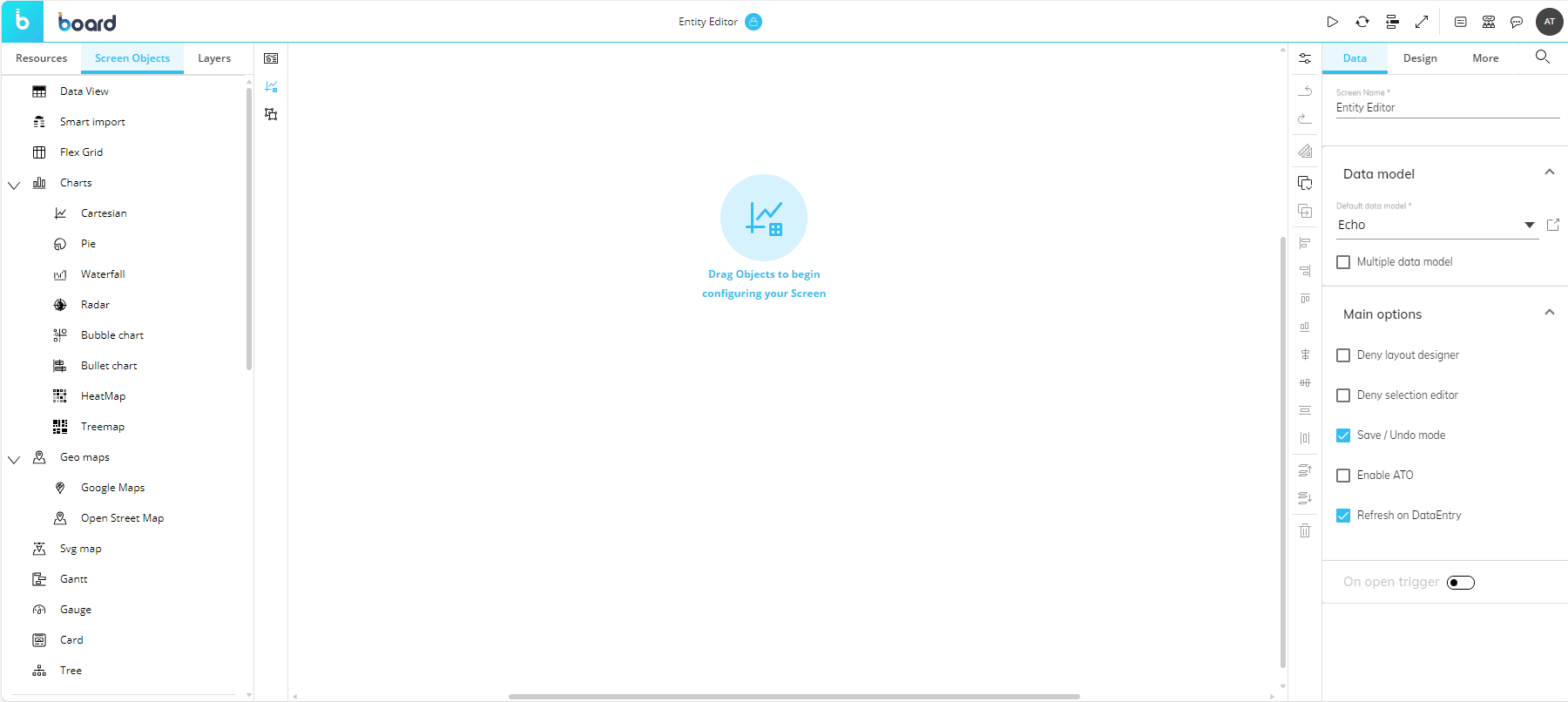
The Entity editor, just like every other Object, can be moved, resized, duplicated via copy/paste, and easily aligned with other Objects on the Screen.
See Configure Screen Objects for more details.
If there are other Objects in the ATO management environment (the Screen or the Container), the Entity editor acts as a Pager and filters all data displayed in the environment as a member is selected or created. Layouts associated with other Objects in the ATO management environment (the Screen or the Container) will only show data once a selection on all available Entity editors has been made. You can add multiple Entity editors to an ATO management environment (a Screen or a Container), but you can't add an Entity editor to a Container if the Screen or Container that contains it already has an Entity editor in place. In other words, you cannot nest an ATO management environment inside another one.
When you create an Entity editor Object, it is initially empty. The next step is to associate it with an Entity.
To do so, select the Object and choose an Entity from the dropdown menu in the Object Properties panel to the right of the Screen editing page.
If the Multiple Data models mode is enabled on the Screen, an additional dropdown menu will allow you to select the Data model containing the Entity to be associated with the Entity editor.
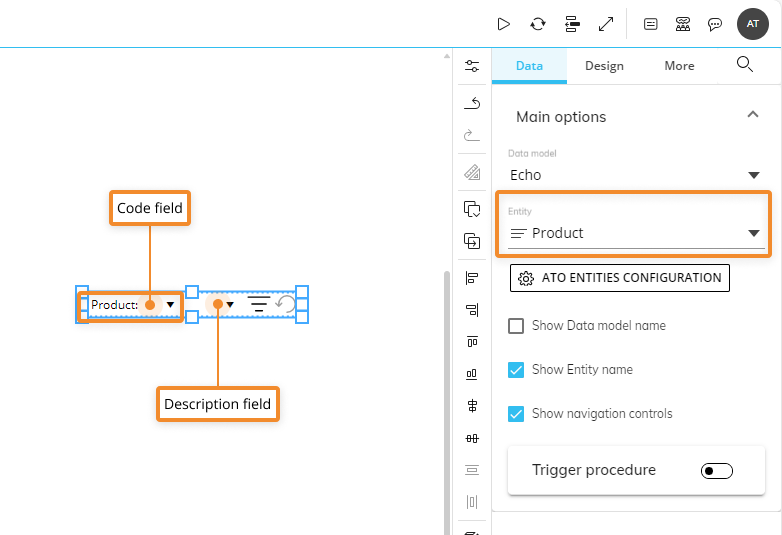
Once associated with an Entity, the Entity editor becomes immediately operational and can be used to create or modify Entity members right away.
See Entity editor properties and settings for more customization options.
Configuring an Entity editor Object
Once you've selected an Entity, click on the ATO ENTITIES CONFIGURATION button to bring up the following configuration window:
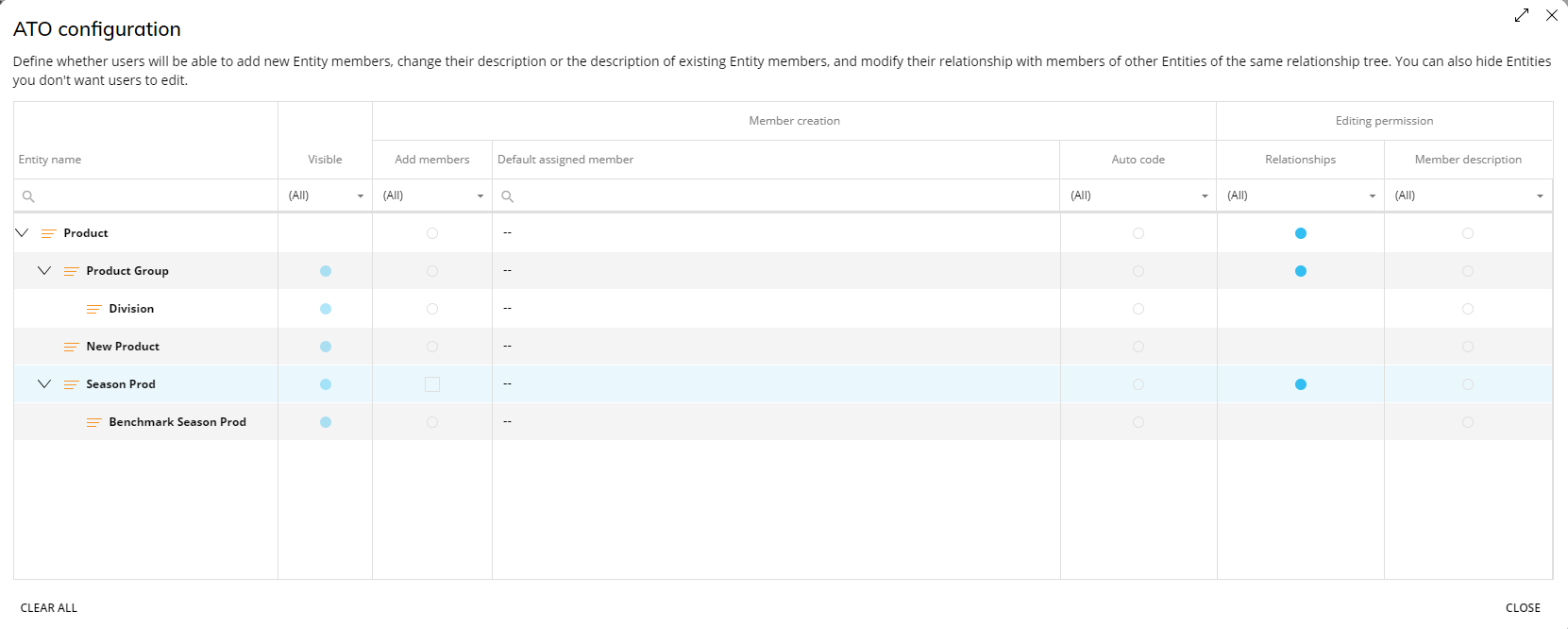
The ATO configuration window shows all parent Entities of the Entity you previously selected, even if they're not directly related. For each of them, the following options are available:
Visible. If enabled, the end user is allowed to modify the relationship between the selected member of the child Entity and members of parent Entities
You can use the "Visible" option in conjunction with the "Default assigned member" option to suggest a default member of the parent Entity to the end user to assign to new members of the child Entity: in this case, both options must be active. You can also set a default member of a parent Entity that will be automatically assigned to all new members of the child Entity created by the end user: in this case, a default member of the parent Entity must be configured via the "Default assigned member" option and the "Visible" option must be disabled so the relationship can't be modified by the end user.Member creation.
Add members. Allows the user to create new members of the previously configured Entity using the
 icon of the Entity editor. If the option is enabled on parent Entities, the end user will be able to add new members at higher levels of the hierarchy from the member creation window using the "+" button shown below:
icon of the Entity editor. If the option is enabled on parent Entities, the end user will be able to add new members at higher levels of the hierarchy from the member creation window using the "+" button shown below:
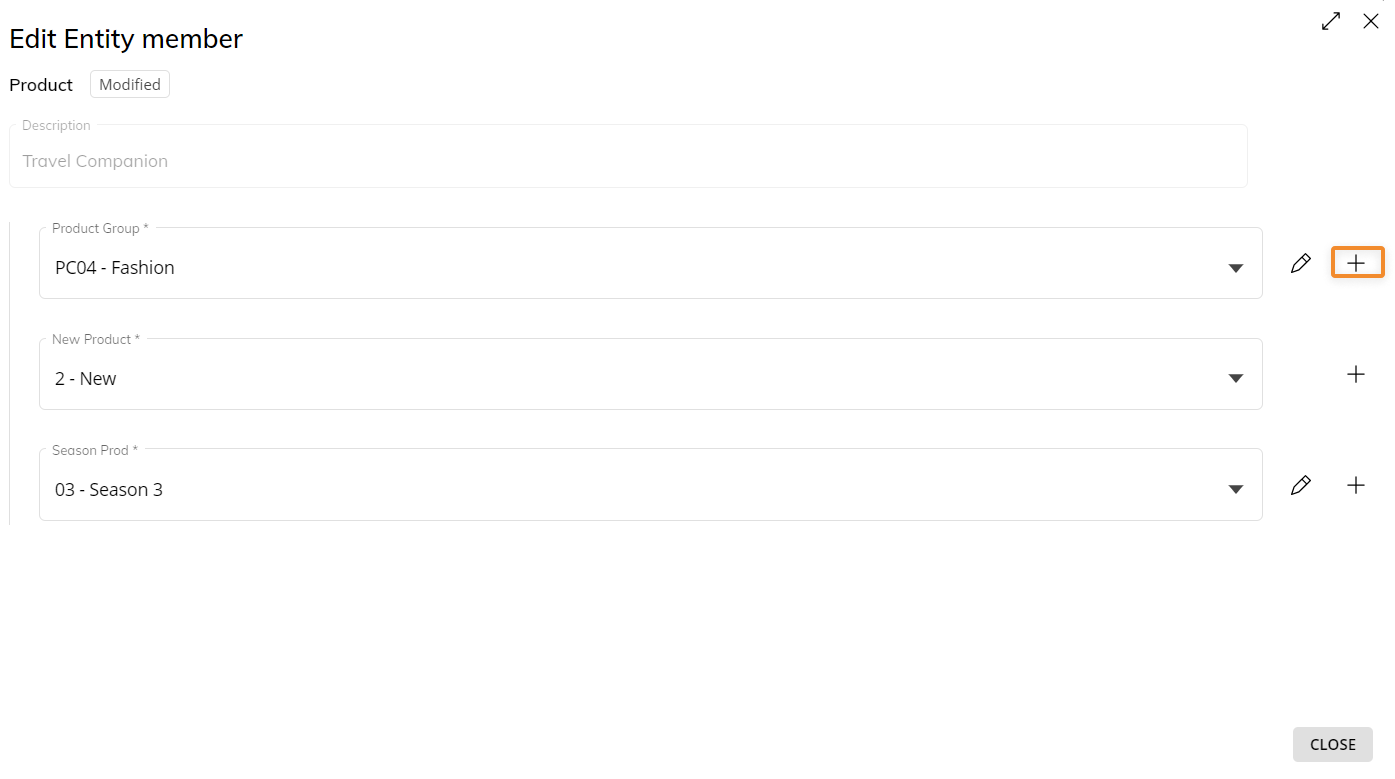
Default assigned member. Allows you to select the default member of the parent Entity to which newly created members of the child Entity are assigned by default.
For example, consider a scenario where an Entity editor allows the creation of new members in the Product Entity (the "Add/Edit members" option has been enabled on the Product Entity). In the configuration window, you can set a default member for each of the available parent Entities: by doing so, every new member added to the Product Entity will be automatically related to previously chosen default members of available parent Entities.Auto code. Automatically creates the code for new Entity members incrementally, using a sequence of numbers (i.e. 0000000000000000001, 0000000000000000002, and so on)
Editing permission
Relationships. Allows the user to edit the Relationship of the selected Entity member.
Member description. Allows the user to edit the description of the selected Entity member.
The following image shows of a full-featured Entity editor associated with the Product Entity:
 See Interacting with an Entity editor Object for more details on how to use it.
See Interacting with an Entity editor Object for more details on how to use it.
Additional Entity editor properties and settings
Entity editor properties are available from the Object Properties panel to the right of the Screen editing page once the Object is selected.
The Object supports all options common to all Screen Objects.
Properties specific to the Entity editor Object are highlighted in the following image and explained below:
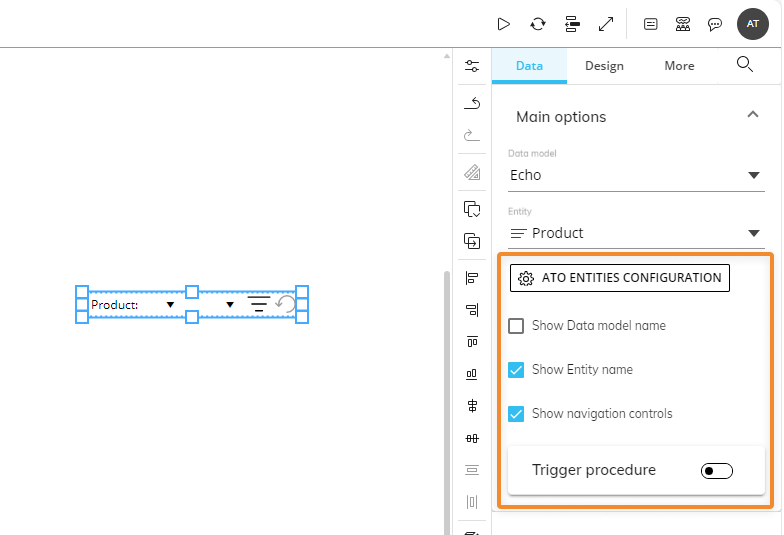
ATO ENTITIES CONFIGURATION (Button). Click on this button to open the ATO configuration window.
Show navigation controls (enabled by default). If disabled, hides the "Add new member" icon
 , the "Edit existing member" icon
, the "Edit existing member" icon  and the "Edit member's description" icon
and the "Edit member's description" icon  , regardless of configurations made in the ATO Entities configuration window.
, regardless of configurations made in the ATO Entities configuration window.Show Entity name (enabled by default). If enabled, displays the associated Entity name before the Code and Description fields.
Show Data model name. If enabled, displays the Data model name in the Entity editor area.
Trigger procedure. If enabled, allows the configuration of a Procedure that is executed whenever the end user selects an Entity member. Additional options let you disable the Layout refresh for other Objects in the ATO management environment when the end user makes a selection (in this case, be sure to include a "Refresh Screen" action in the triggered Procedure in order to always show updated data) and also to trigger the Procedure execution when the end user clears the current selection using the Reset selection icon
 . See The Trigger Procedure feature on the Pager Object for more details.
. See The Trigger Procedure feature on the Pager Object for more details.
Interacting with the Entity editor Object in Design mode
In Design mode, the Entity editor provides the same interactive features available in Play mode.
.svg)